 |
| The recollections of Gordon Young, the First Mate
on the 'Laloun' |
| |
| Let me start by telling you that I joined the
Company in 1946. Before that, I joined the Royal Navy, signing up at 17
(1942), did my time on the Lower Deck serving in a Mine Layer as a very
‘ordinary ’seaman, doing sea time to qualify for Officer Training,
commissioned as a Midshipman (1943) served on a LCT and was at the
Normandy Landings in June 1944. Then had a spell ashore to qualify in
Navigation and Watch Keeping and was posted to an Escort Carrier and
spent most of the rest of the war in the Far East and was at Singapore
for the surrender of the Japanese. By this time I had got my first
stripe and was now Sub Lieut. W G Young RNVR. |
| |
| I was due to be ‘demobbed’ in the October of
1946 and spent the last three months at a Shore Base in Scotland where I
met Lieut. Commander Saunders RNR and that is when my career with Pan
started. |
| |
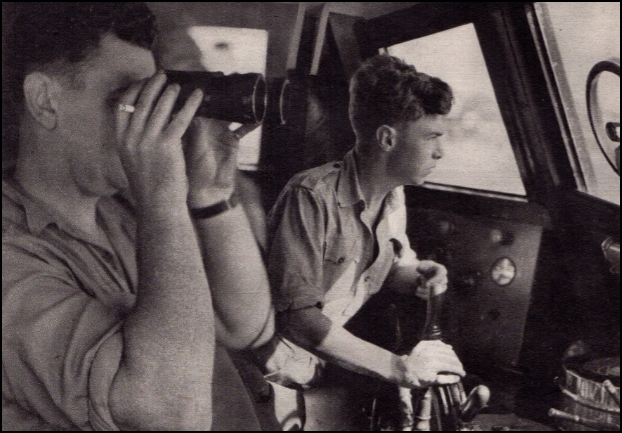 |
|
Gordon with Commander Saunders |
| |
| Saunders had been a deep sea trawler skipper
before the war and was also a very competent marine engineer and he had
been approached by Pan to take on the skipper of Laloun and was looking
for a ‘No.1’ to handle the Navigation and deck work and he invited me to
join him. As I had no idea what I was going to do when I came out of the
Navy (having been turned down for a permanent career with the Royal
Navy) I jumped at this opportunity not knowing exactly what I was
letting myself in for. It was only later when I met my new bosses Alan
Bott and Aubrey Forshaw that I learnt of their intentions to print in
France and bring the books back to the UK in their own boat.
|
| |
| So in October 1946 I came out of the Navy,
went down to London, met my new employers, who sent me back up to
Scotland to Peterhead where a ’new boat’ was lying. This turned out to
be a brand new 110ft Fairmile Motor Launch, built locally, which had
been purchased from the Admiralty - it was just a bare hull – no
engines. The London Office had arranged for a boat yard (Thorntons) in
Inverness to take on the job of the conversion to carry cargo (books).
It was towed from Peterhead to Inverness with me on board and work
started in the November and continued throughout the Winter of 1946/47 –
the coldest Winter on record in Scotland at that time. Skipper Saunders
joined me and we lived aboard most of the time to supervise the work. |
| |
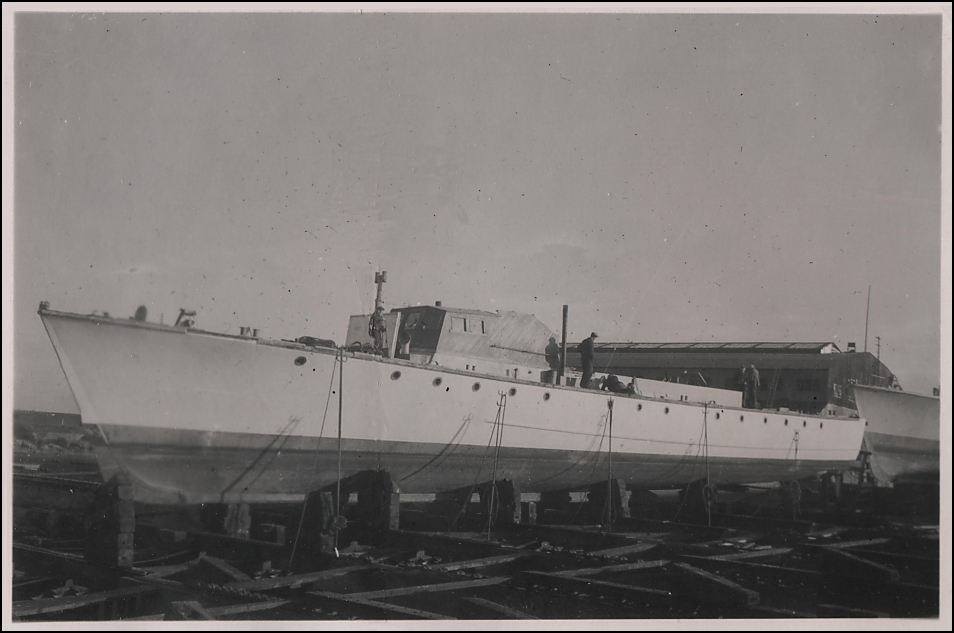 |
| |
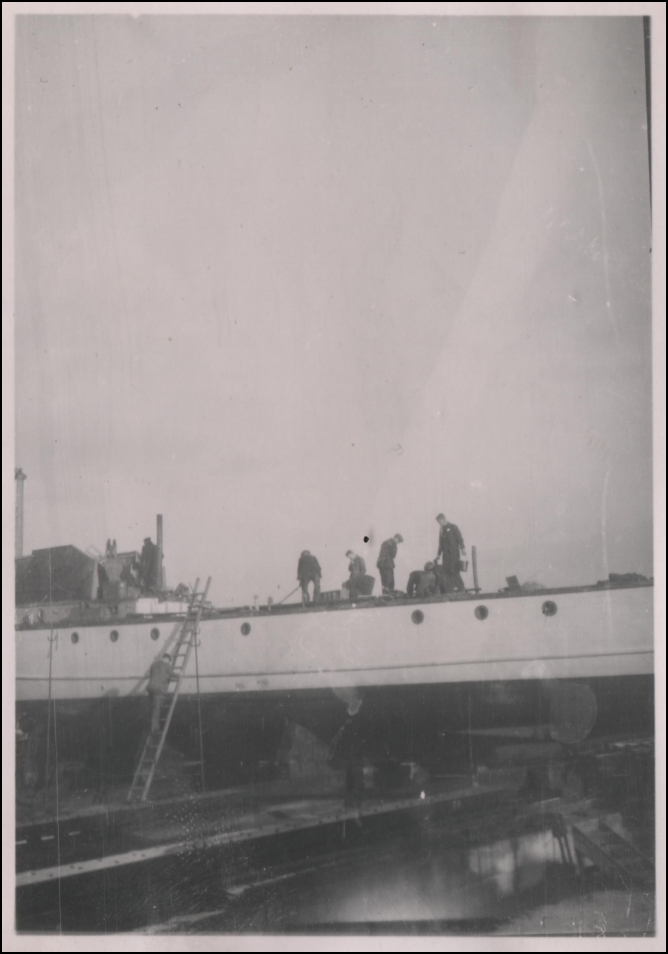 |
| |
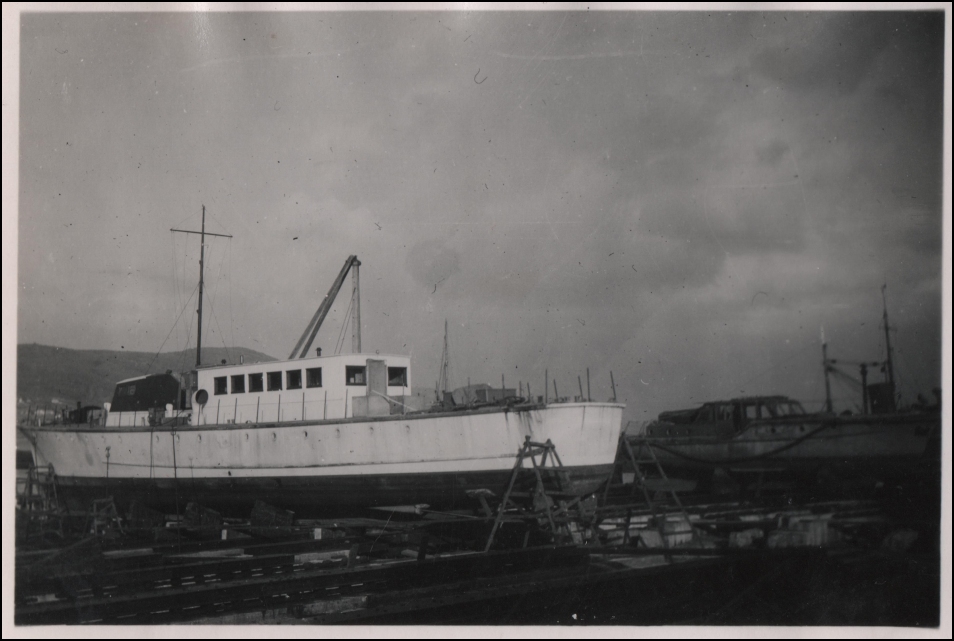 |
| |
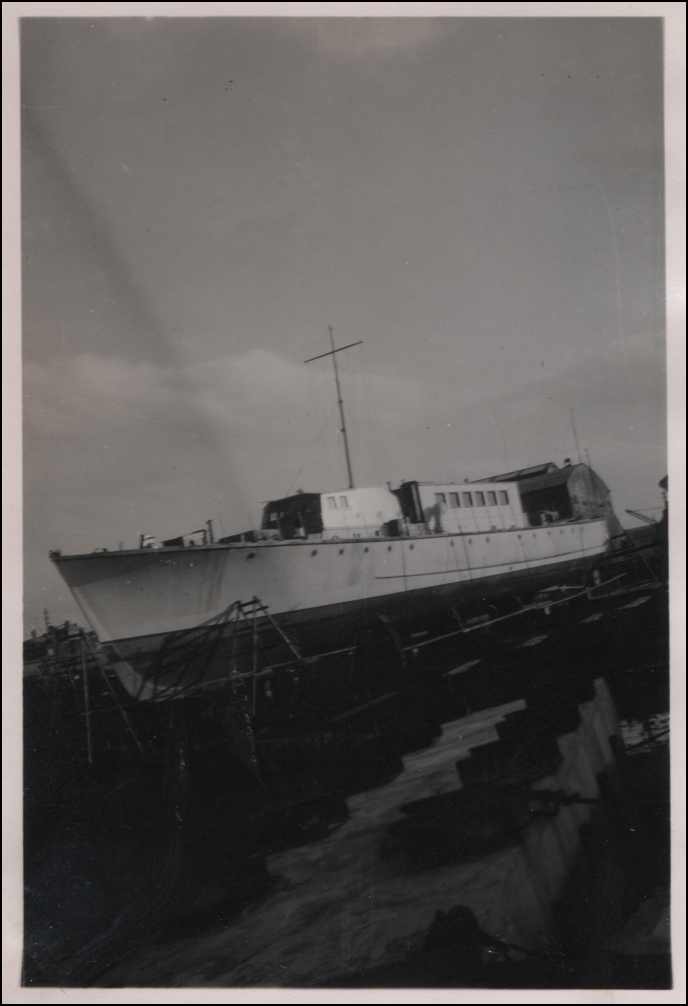 |
|
Working on the 'Laloun' at Inverness |
| |
| Work was completed by May 1947 and with two
local lads as Crew we came South, met our bosses who thoroughly approved
of the ship and after giving them a short trip up the Thames, we
prepared for our first voyage to Paris – down the Thames, across the
Channel and up the Seine to Paris. And that was how it all started. |
| |
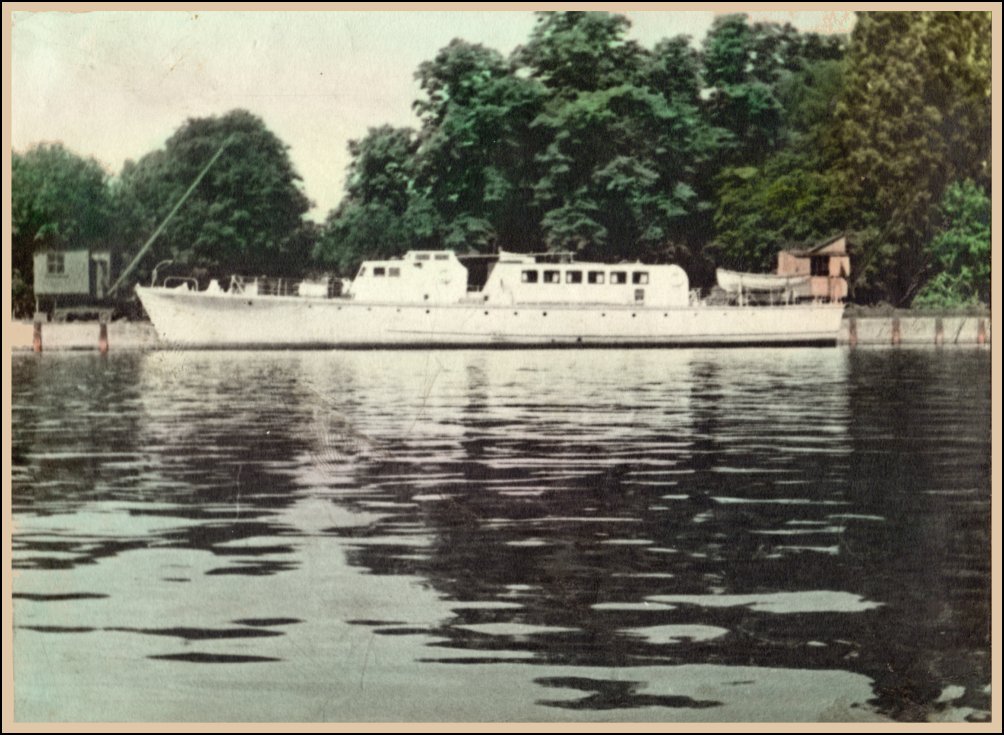 |
| The 'Laloun' at Kingston Upon Thames wharf. |
| |
| The ship was named ‘Laloun’ from Kipling’s
‘On a City Wall’. Alan Bott had the book on his desk when he was
deciding a name. All ship’s names are registered at Lloyds and no two
or more ships can have the same name. Originally AB ( as Alan Bott was
always known) wanted the name ‘Patricia’ but that wasn’t possible as it
was already in use. Also there was a ship using the name ‘Lalun’ so he
just added the ‘o’ and so MV ‘Laloun’ became its registered name. |
| |
| Before continuing the
story of MV 'Laloun', let me back track and briefly explain how it all
began. You will probably know, but if you don’t, what I have to
tell you now is all part of the story. When the Company first
decided to publish paperbacks, to be known as Pan Books, they could not
get paper to print in the UK. Immediately after the war, paper was
still in short supply and rationed to existing publishers. But
there was plenty of paper in France and the then Board of Trade gave
permission for the books to be printed at two printers in Paris and the
idea of the boat was considered. Interestingly the idea came from
a close friend of Alan Bott (AB) and Aubrey Forshaw (ADF), named Edward
Young ( no connection with me! ). He had been a director of the
book design company ‘Rainbird Maclean’ and his interests were looked after
by AB/ADF during the war while he served in the Royal Navy. He was
a pre-war RNVR officer and was one of very few RNVR officers to achieve
command of a submarine and served with distinction. He made the
suggestion for Pan to have its own boat to bring the books back from
Paris as the most economical way.
|
| |
| So in June 1947, we made
our first trip to Paris. The Seine, of course, like so many of the
rivers on the Continent, has always been used by commercial barge
traffic and the Seine was a busy waterway, and I believe at that time we
were the only UK registered ship sailing to Paris. We had
organised a mooring on the Thames at Kingston upon Thames, being the
nearest to the warehouse at Esher. The London Office had rented an
old wartime parachute packing shed for its first warehouse.
|
| |
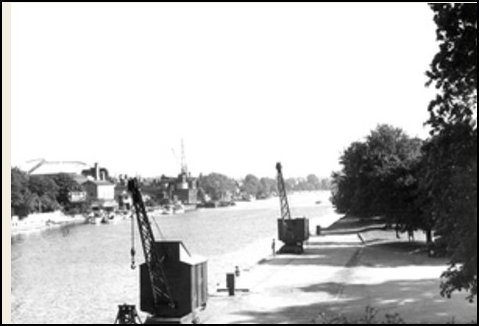 |
| |
| We would leave Kingston on a Monday
(this would be our pattern for most of our future sailings) down the
Thames, lock through at Teddington into the Thames tideway, passing
under the London bridges (a bit scary to start with) then on down to
Tilbury where we picked up a pilot who took us down the Thames Estuary,
round North Foreland, passing Deal and Dover and dropping the pilot off
Dungeness. We then crossed the Channel, fetching up at Le Havre on the
Tuesday evening where we stayed overnight and proceeded into the Seine
via a canal from Le Havre docks. This avoided the very treacherous
approach via the Seine estuary. Then on to Rouen to pick up a river
pilot (compulsory) to take us up river to Paris, a distance of some 90
miles. |
| |
| The journey to Paris usually took two days –
there were 8 locks to negotiate between Rouen and Paris, the Seine at
Paris being some 90ft above sea level – and very often we had to wait
our turn. The locks are vast comprising two locks – le petit ecluse (for
a single vessel with priority) and le grande ecluse which could take 6
or 8 large barges all operated by lock keepers. With our French pilot
(Maurice) who knew all the lock keepers and with a judicious ‘tip’ (pour
boire !) we usually managed to get through quite quickly. We could not
travel at night so the journey time to Paris varied between 2 and 3
days. We always aimed to arrive in Paris on a Friday. This gave us the
weekend before loading on the Monday. |
| |
| Aubrey Forshaw,(ADF) who I was to learn later
started life at 14 years of age as a ‘printers devil’ (If you don’t know
what a ‘printers devil’ is, ask me) and also was a keen ‘Francophile and
knew Paris well. as I was to discover later. One of his many friends in
the French publishing world, was one, Robert Mouzillat, (RM) and it was
he who met us on arrival in Paris. RM had been responsible for arranging
with two French printers in Paris to print the first Pan Books that we
were to bring back to the UK. He also made arrangements for us to be
moored, for the weekend alongside the Touring Club de France floating
club house, just close to the Pont de la Concorde. This became or
regular arrangement on every trip. Mooring alongside the TCF floating
club house, enabled us to top up with fresh water and connect with their
electricity supply. All very convenient. |
| |
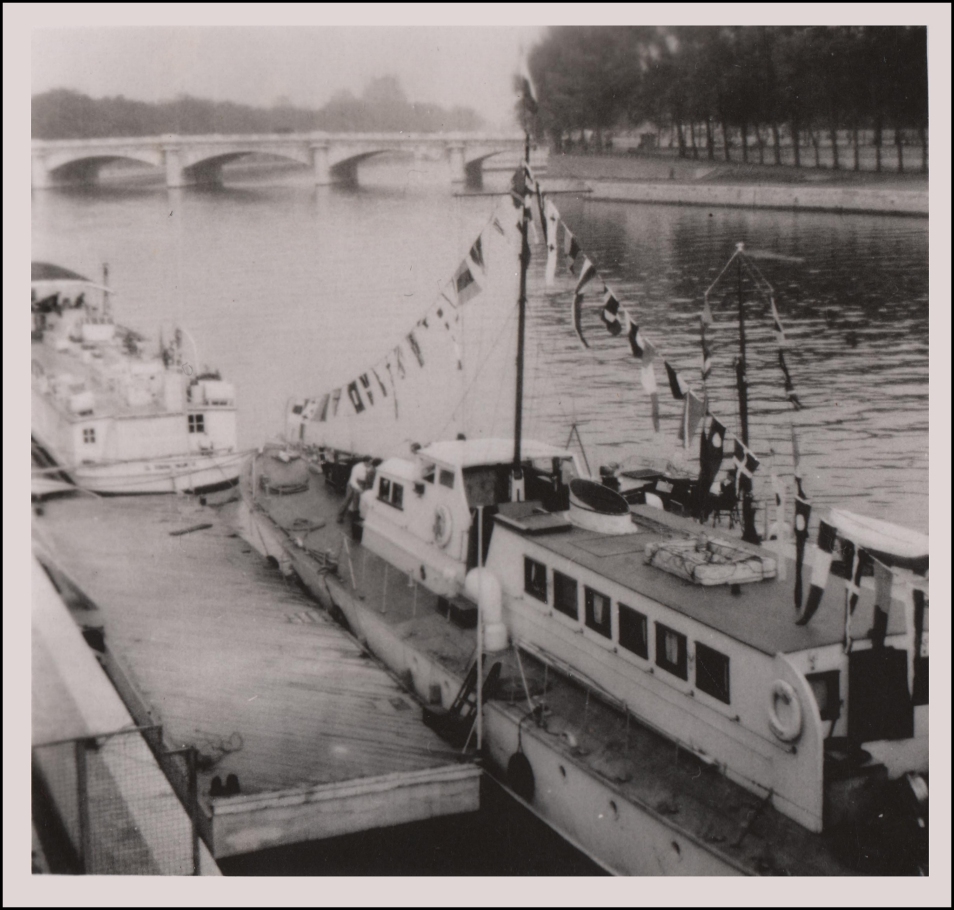 |
| Moored up at the Touring Club de France |
| |
| 'Picture Post' was interested in the story
and sent reporter Merlyn Severn on the first trip. |
| |
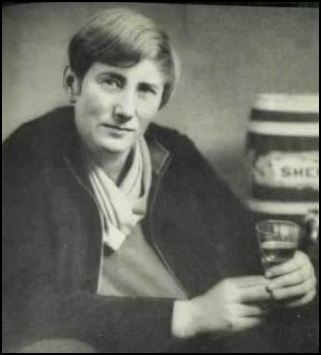 |
| |
| Let me tell you about Merlyn Severn. This is
what she told me... She had been a wartime photo-journalist for 'Picture
Post' and although never allowed up at the frontline, she had followed
the British advance all through France and into Germany, photographing
the carnage and destruction. However, I met her on the quayside at
Kingston on Thames one Sunday afternoon in September 1947. We were due
to sail the following morning and I was the only one aboard, relaxing
after unloading the previous day. The skipper and our two crew were due
back later. I heard a very ‘mannish’ voice hail the ship and going on
deck was confronted by this rather round, five foot nothing ‘person’
strung around with cameras, light meters and all the trappings of her
trade. She had to cross a narrow gangplank to get aboard which she
managed with my help holding her hand. I knew we were expecting someone
from Picture Post but was not expecting a ‘lady’ She admitted she was
really hitching a lift to Paris where she had another assignment but she
certainly worked her passage and you can now see the result of her
‘story’ |
| |
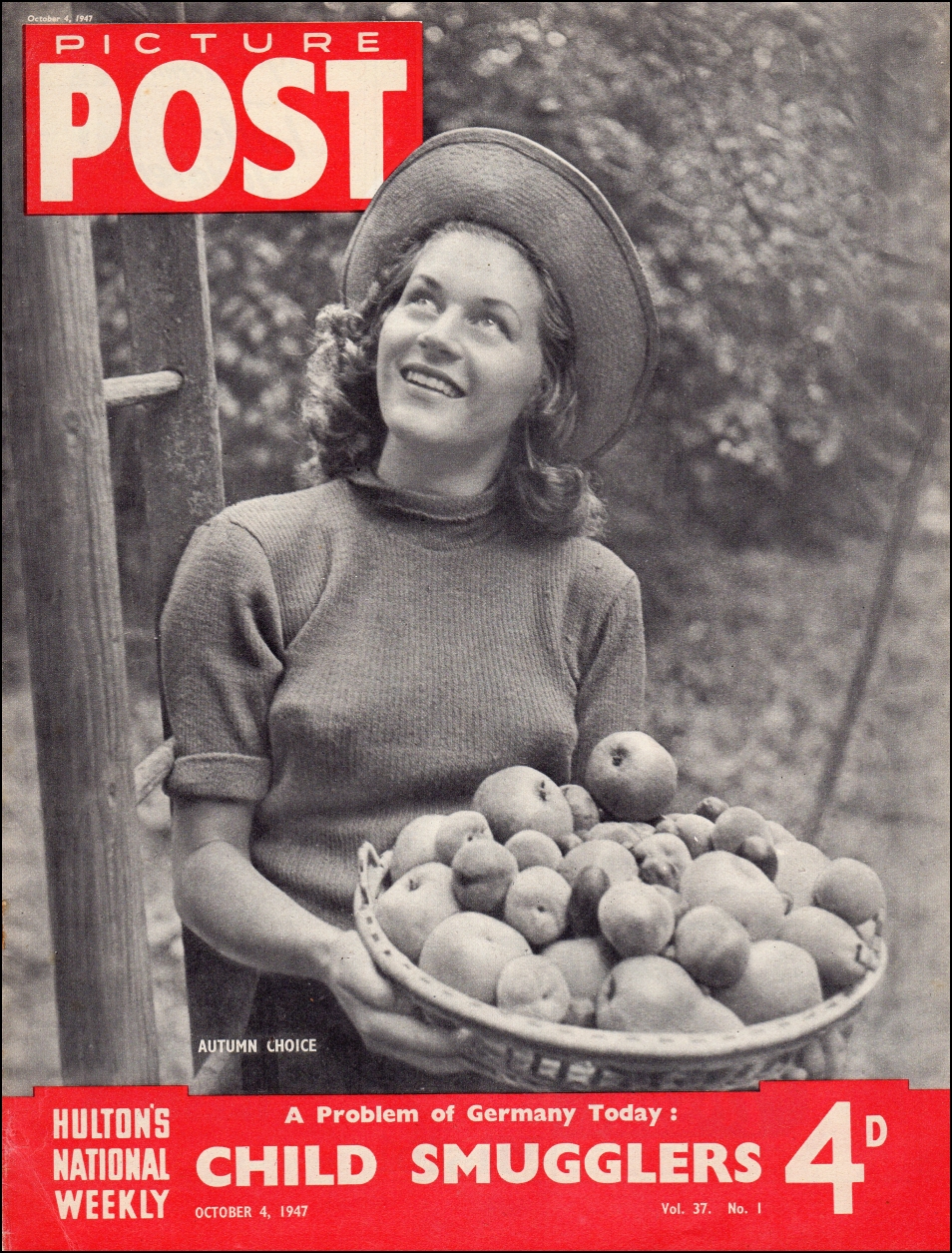 |
| |
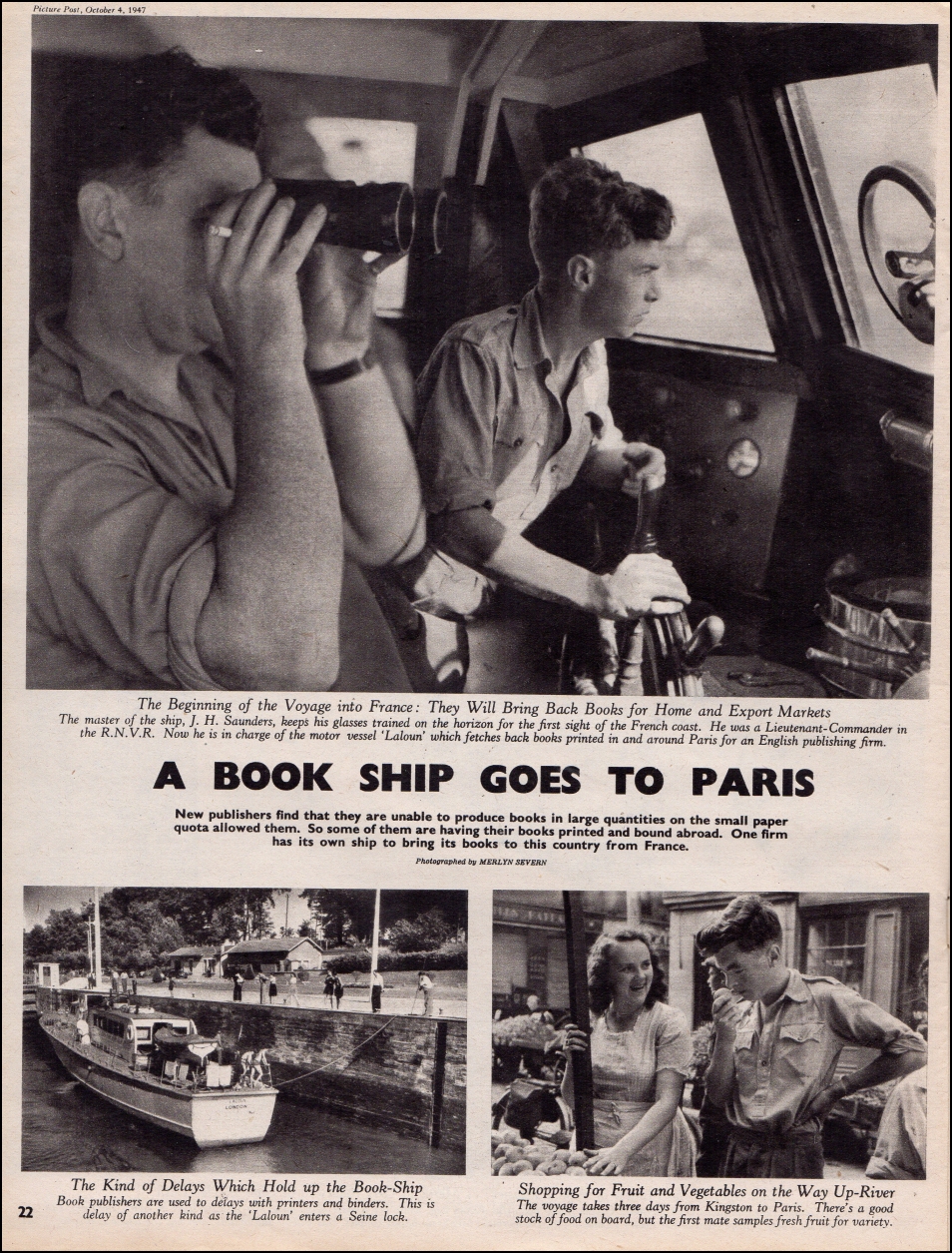 |
| |
| Let me take the main picture of Skipper
Saunders and 1st Mate Gordon Young first. The caption below the picture
states.....”J H Saunders keeps his glasses trained on the horizon for
the first sight of the French coast”..sounds very dramatic but In fact
we were still on the lower reaches of the Thames – the picture was taken
through the wheelhouse window and if you look closely at the window
behind my head, you can see some smudges – that was the shore – erased
by clever photography (but not quite) So thoroughly posed ! Saunders was
on the run from his wife and the binoculars were supposed to hide his
face. His right hand holding the cigarette shows a foreshortened 4th
finger. He had lost the tip of his finger some years previous. That was
a giveaway for his wife to track him down some time later. |
| |
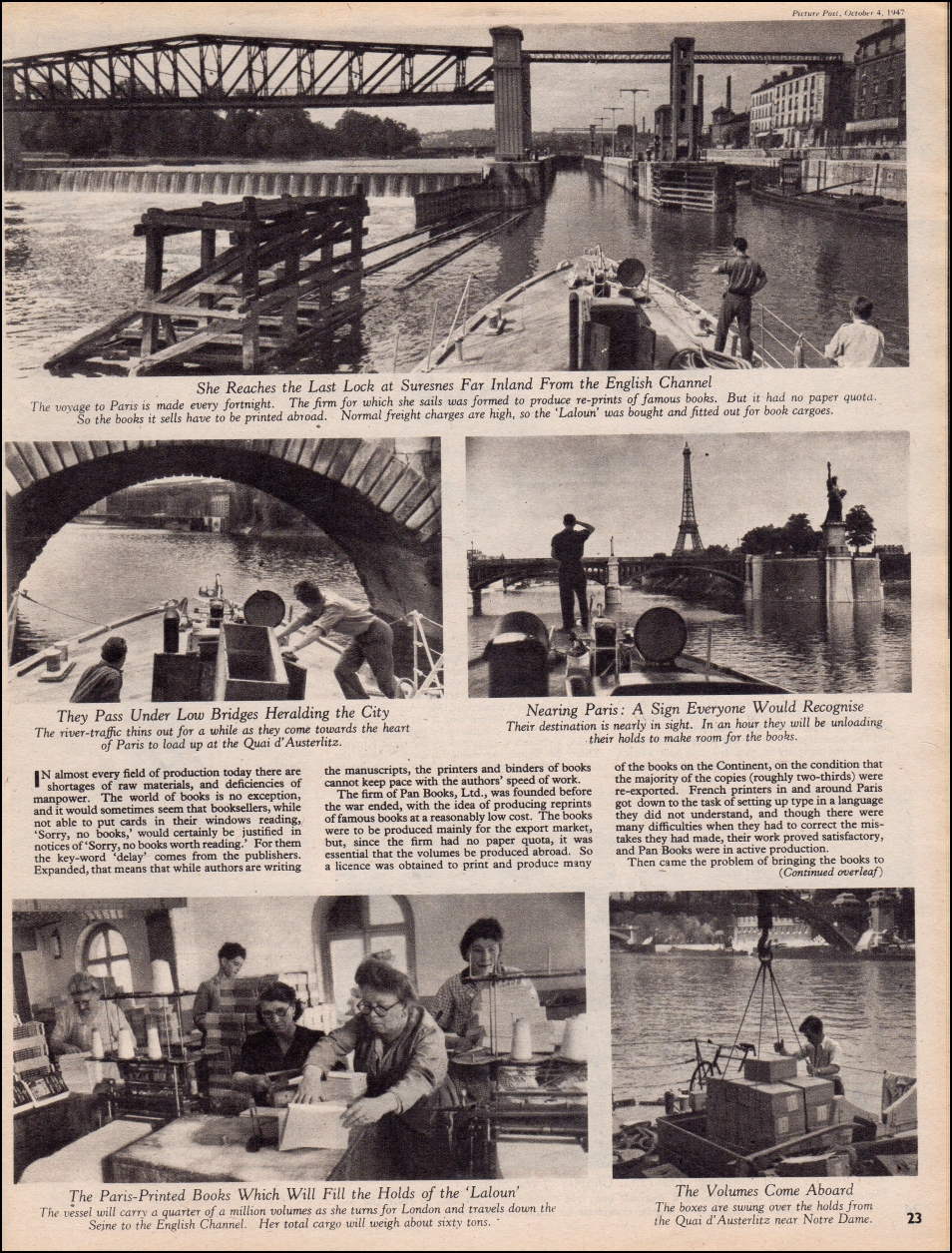 |
| |
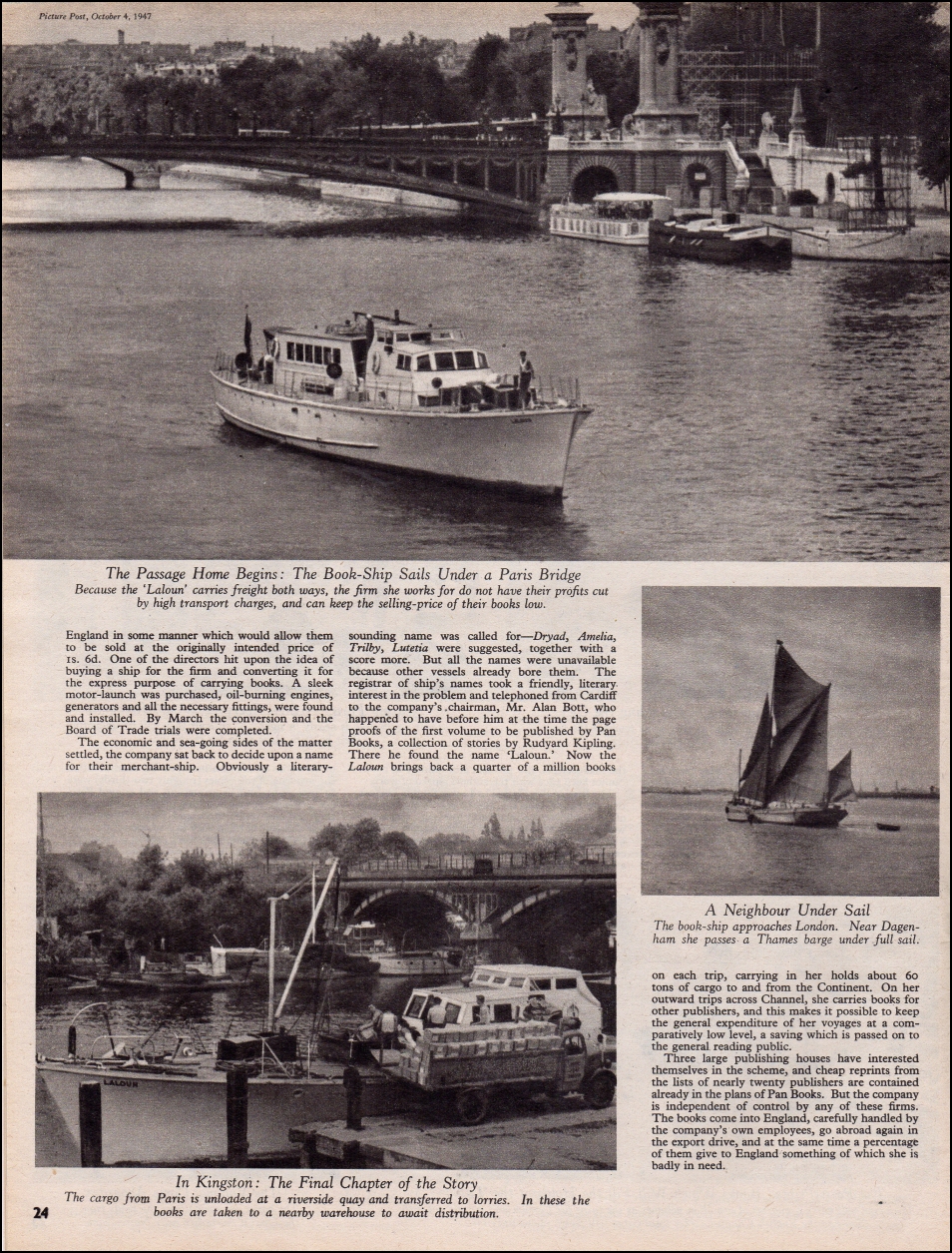 |
| |
| The other picture of 'Laloun' on the Seine
with the caption... “The Passage Home Begins”.. again this sounds very
dramatic, but for anyone knowing anything about ships would know we were
empty – the hull is well out of the water – look at the waterline. In
fact we were proceeding upstream to begin loading and the photo was
taken from the middle of the Pont de la Concorde and the bridge in the
picture is the Pont Alexandra III. |
| |
| We always arranged to arrive on a Friday and
on this first voyage, everything went according to plan. As I have
previously mentioned, we were met by Pan’ Paris agent Robert Mouzillat
who had arrange for us to moor alongside the floating Club House of the
Touring Club de France. So we were able to see the sights of Paris but
with little spending money it was mainly a ‘walkabout’ on this first
visit. We ‘dressed ship’ for the occasion and Robert and friends were
entertained on the fore deck. Later Aubrey Forshaw turned up having
flown over from London, interested to see the loading of the first
consignment on its way back to London. There were several times later on
when he travelled with us – he was a great Francophile. |
| |
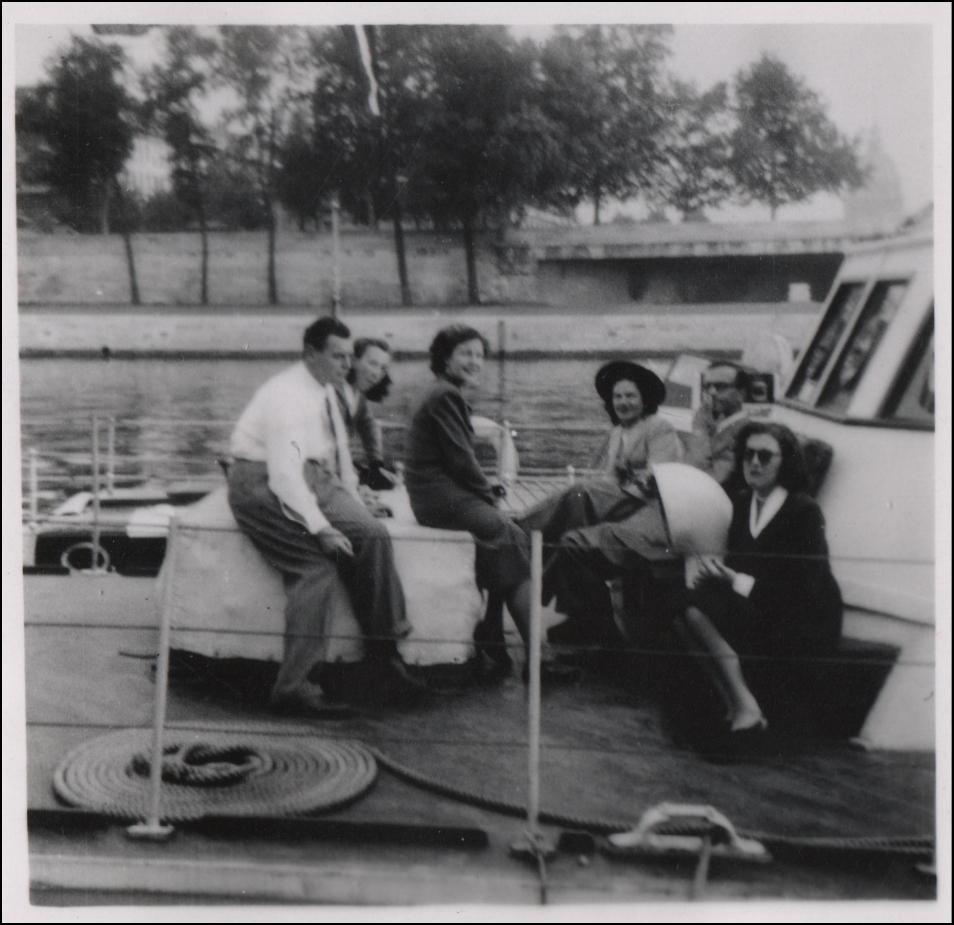 |
|
Entertaining on the fore deck. |
| |
| On the Monday morning early, we cast off and
moved up river to the commercial docks, I think it was called Quay
Austerlitz and we loaded 250,000 books – the very first Pan titles –
printed by French printers who we learnt could not speak any English –
the French compositors setting the type in English. Quite an
achievement. |
| |
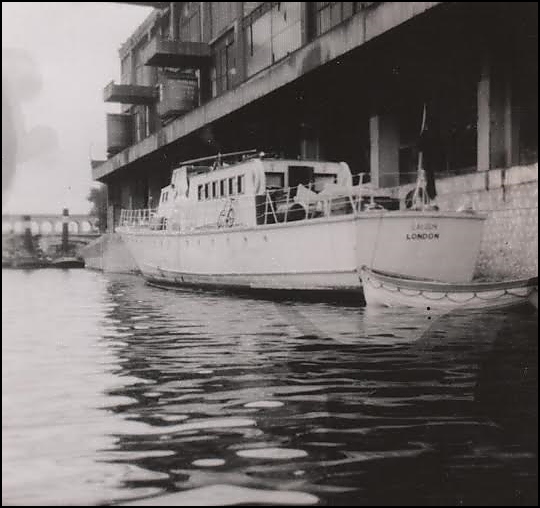 |
|
At the Quay d' Austerlitz in Paris
|
| |
| Loading took most of the day and on
completion, we dropped back down river to our previous berth ready for
an early departure the following morning. |
| |
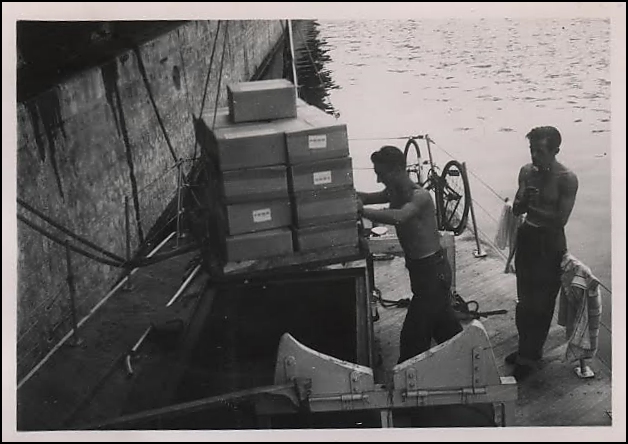 |
|
Loading the boxes of books. |
| |
| We departed the next morning, a Monday early
in June 1947 – can’t remember the précis date after all these years –
and sailed downstream feeling well pleased with ourselves and knew much
more about the routine of passing through the locks. Maurice, our river
pilot (obligatory), always took the wheel which left the skipper and I
time to relax and enjoy the scenery. Our two young crewmen would be
washing down the decks and stowing away ropes, fenders etc ready for our
sea crossing. It was a straight forward run down river to Rouen where we
dropped our Pilot. The Seine at Rouen is tidal with a considerable rise
and fall and we quickly learnt that we needed to be aware of the ‘bore’
that creates such a back wash, at certain states of the tide. We
proceeded downstream to Le Havre with Skipper navigating and me at the
wheel and at times it was quite tricky, particularly when faced with an
oncoming French barge of some 2000 tons charging upstream. This first
trip was proving quite a ‘learning curve’ for us, as did the rest of the
voyage back to the UK. |
| |
| The Skipper and I had discussed the best
course to take when crossing the Channel. We had to be off Dungeness by
dawn to pick up our pilot who would take us round the coast as far as
Tilbury in the Thames Estuary and allowing for the tidal stream up and
down the Channel, I plotted our course for us to arrive off Dungeness
about 0800hrs. The weather was beautiful and the sea a flat calm but as
we approached the English coast, we were suddenly engulfed by a thick
sea mist which cut visibility to zero. We reduced speed to a crawl, and
using the foghorn, we crept on and navigating by dead-reckoning
proceeded very cautiously towards Dungeness. When I calculated we had
‘run our distance’ which should have put us about one mile off the shore
we stopped to listen and using our lead-line took soundings to establish
how near we were to the shore and our two crew were up on the bow as
lookouts. Within minutes we suddenly saw large white buildings about 500
yards ahead and we quickly turned away to follow the coast towards
Dungeness. By studying the chart, we were able to establish that what we
had seen was the seafront at Bexhill-on-Sea, some 30 miles West of
Dungeness. So my navigation skill, learnt while in the Navy, had been
put to the test and found wanting but Skipper didn’t blame me as he had
agreed with me the course we took crossing the Channel. So we made up
time and met the Pilot boat at Dungeness with a sigh of relief.
|
| |
| Passing Dover, the Pilot spotted a fishing
boat, suggested we go alongside and puzzled, we did as he suggested. The
skipper of the fishing boat tuned out to be his brother and coxswain of
the Dover Lifeboat. In exchange for a pack of duty free cigarettes, we
received a dozen mackerel and we all enjoyed a super breakfast !! |
| |
| Proceeding past the Goodwin Sands – always
tricky – round North Foreland and into the Thames Estuary we eventually
arrived off Tilbury to be met by a Customs launch, this being standard
procedure for all incoming vessels. We were asked where we had come from
and on replying “Paris”, they replied “Please proceed to Tilbury Landing
Stage and await for Customs inspection of your cargo”. This we did, two
Customs officers boarded us and immediately asked “where are these
‘dirty’ books from Paris” They had obviously had a tip off – Paris was
well known for producing pornography but the laugh was on us as we had
laid out for their inspection a copy of each of the ten titles we were
carrying............ titles by well known authors, such as Rudyard
Kipling, Agatha Christie, J B Priestley etc etc ................ and you
should have seen their faces which quickly turned to smiles and hand
shakes all round. A copy of each title was presented to them and were
told that they would be added to their library of reading material in
their rest room where they waited for ships to arrive. After that, every
subsequent trip, they just waved us through. |
| |
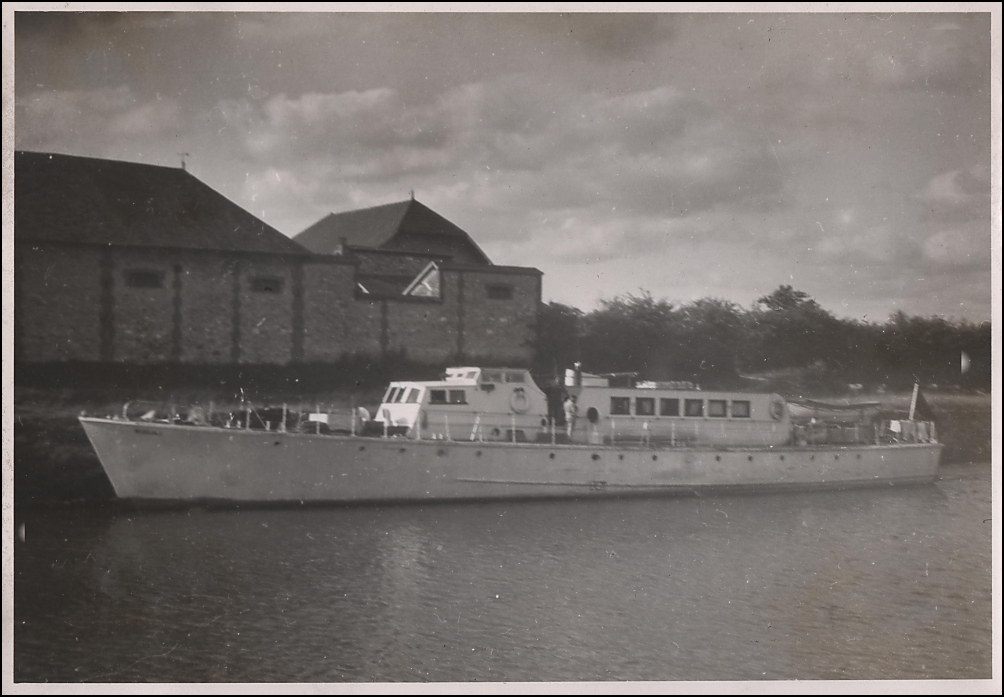 |
| |
|
Once in the Thames, ships come under the authority of the Port of London
Authority (PLA) and our London Office had arranged for us to be unloaded in
St. Katharine's Dock. Finding this particular Dock proved difficult as we
didn’t have large scale charts of the Thames showing all the Docks and their
Lock Gates where we would enter, so after various enquiries with other craft on
the river we eventually found the dock entrance where we passed through into St.
Katharine’s Dock . Here was our next experience, where I nearly caused a
dock strike ! Being directed to our berth, we were greeted by the sight of
two teams of dock workers waiting to unload us. Each team comprised 15
people plus a foreman. Bear in mind, these guys were used to dealing with
big cargo vessels and the rules stated exactly what each member of the team
would do.... work in the hold loading the cargo onto hoists, manhandling the
hoists up through the hatch to deck level, hand signalling the crane driver to
hoist the load over the side on to the dock side, moving the cargo into a
warehouse. I quickly realised that instead of the 15 men plus
foreman present in each team, because of our size, only 6 men would be needed at
each cargo hatch. A standoff ensued between me and the foreman about this,
who threatened, in no uncertain terms, he would call a strike, so were obliged
to watch 6 men work the cargo while the rest stood around smoking. A
costly experience for the office who later were able to come to an arrangement
with the PLA, that we could proceed upstream to Kingston upon Thames and do the
unloading ourselves.
Having unloaded, we proceeded upstream to Kingston, where we moored.
Thus ended our first eventful trip and shortly after the first ten titles
started to appear in bookshops around the country (and that’s another story) |
| |
| At one time my boss, Alan Bott, had let it be
known that he would appreciate a Camembert cheese, not being available
in the UK at that time which I had duly purchased in Rouen. After every
trip, I had to go to the London Office to collect the crew’s wages and
any instructions concerning our next trip. At the time there was a Green
Line Bus service from Kingston passing through London and terminating at
Hitchen, so this was a convenient and quick way to Hyde Park Corner and
Pan’s London Office at Headford Place. So after this first trip, I take
off by bus clutching the Camembert cheese placing it careful on the rack
above my seat. In my anxiety to get off at the right stop, I forget
about the cheese and arrive at the office and rather sheepishly have to
explain to the boss that his cheese was on its way to Hitchin. “Well
what are you going to do about it” I telephone the bus depot at Hitchin
to be told “Nothing has been handed in here – try catching the bus on
its return journey” I get back to Kingston, meet the bus, claim the
cheese, which due to the warmth of the bus was by this time smelling
distinctly high and the bus conductor’s parting comment as I got off the
bus “No wonder nobody sat in that part of the bus- the smell was awful
!! “ And the boss got his cheese. |
| |
| Let me conclude this saga by telling you of
various incidents that occurred during the two years we ran between
London and Paris until the day came when Pan could print in England,
which was obviously more satisfactory. |
| |
|
Between June 1947 and July 1949, we would have made one trip every two weeks and
the routine was largely the same each time and we became quite well known on the
Thames and Seine. At that time the Port of London was an extremely busy
port – remember this was long before ‘containerisation’ of cargos – and cargo
ships of all sizes would be moving up an down the Thames all the time, so it was
‘scary’ at times for us but we managed. Our skipper was very
experienced from his days as a trawler skipper and we very quickly learnt how to
navigate down the Thames, Down past the large Ford works at Dagenham and Tate &
Lyle’s riverside refinery at, I think, Purfleet, where the river was much wider
and then on past Tilbury, where we picked up our Pilot to take us round to
Dungeness, it was straightforward and not so ‘tense’ (get the picture ?).
The locks on the Seine, where we had Maurice our river pilot to negotiate for
us, we usually found we could get to Paris in under 48 hours, which gave us some
free time in Paris, before loading. The occasional gales in the Channel
would delay us but most times an ‘round trip’ would be 12/14 days.
|
| |
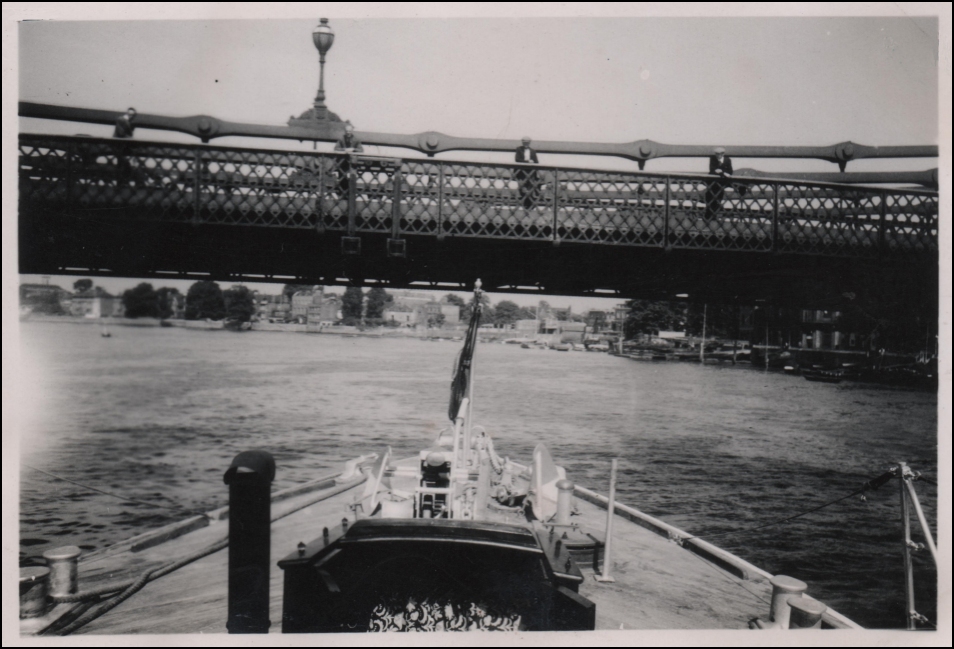 |
|
Hammersmith Bridge |
| |
|
The Thames is tidal as far as Teddington,
and great care had to be taken when ‘shooting the bridges’ and Hammersmith
Bridge was always a ‘tricky’ one as it had quite a low span. On one trip we
misjudged the height of the tide and realised at the very last minute we were
not going to get underneath. I remember, I was at the wheel at the time and we
always approached this particular bridge dead slow, so I was able to reverse
away and the skipper decided to lay alongside a nearby quay to wait for the tide
to turn. Unfortunately we lay alongside too long and got caught on the mud All
in a days work !
|
| |
.jpeg) |
| |
.jpeg) |
|
In the mud at Hammersmith. |
| |
| While in Paris, as I mentioned earlier, we
were fortunate to be able to moor alongside the floating club house of
the Touring Club de France (TCF) which lay just upstream from the Pont
de la Concorde, usually arriving late Friday afternoon, giving us a
couple of free days before proceeding upstream to the commercial dock at
Quay Austerlitz to load. Aubrey Forshaw (ADF) was a great Francophile
and love to slip over to Paris when we were there. One time he decided
to hold a drinks party on board for several authors who happened to be
in Paris – I think there might have been some literary event on at the
time. So we ‘dressed ship’, set out a drinks table and I suppose we must
have about twenty people aboard but the only one I can remember now was
J B Priestley. Pan had recently published his ‘Three Time Plays’ and as
it happened I had a copy. Thinking I might get him to sign my copy, I
approached the great man, who had settled himself in a chair on the
after deck, away from the main crowd, and was enjoying a quite moment
with a large whisky. I asked very politely if he would sign my copy and
was very rudely told to “F..........off, I never do signings”. I
realised he had had more than one whisky ! |
| |
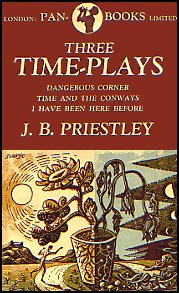
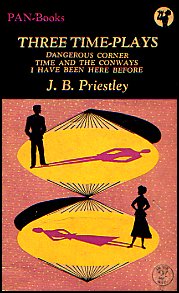
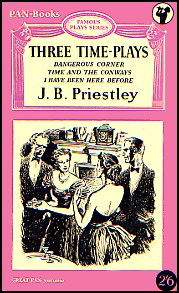
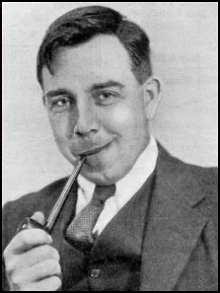
|
| |
| ADF was always very generous on these
occasions, and I remember he took me to one of his favourite
restaurants, where he was greeted by the maitre’d who obviously knew him
from previous visits. After the usual c’a va’s and merci beaucoups we
were handed each a pair of binoculars and referred to a large menu board
at the other end of the restaurant, which was long and narrow with
cubicles down each side to sit four. The menu board was so far away that
you needed binos to read it. ADF was a great raconteur, very keen on
motor racing and in particular old Bentleys, which he restored. He and a
friend raced Austin Healey’s at Silverstone club meetings and I would go
along to lap score. He became a father-figure to me over the years, was
at my wedding and was later referee for my two adopted children. |
| |
| I have digressed. Sundays in Paris was always
a time to relax and my favourite walk after a late breakfast, was up the
Champs-Elysees as far as the Arc de Triomphe and back and then a stroll
across the Pont de la Concorde to look down over the parapet on 'Laloun'
This was a time when Paris had regular confrontations between the
gendarmes and Communist supporters and one summer Sunday morning, I was
standing on the bridge when I realised that on one side there was a mass
march with banners and on the other side massed ranks of riot police and
I was in the middle. As each side approached, I quickly realised there
was going to be a battle so I dashed towards the police shouting “Anglais
– Anglais” and waving my passport. In my school boy French, I explained
who I was and was let through the police ranks, much to my relief. |
| |
|
Now I must confess to a little smuggling to give us some spending money
while in Paris. We always had fenders over both sides of the ship to
protect the hull when passing through the many locks on the Seine and the lock
at Teddington when going up river to Kingston upon Thames. We used old
motor tyres wrapped around with canvas and rope. We learnt early on that
car tyres were in short supply in France so we would purchase retreads in the
UK, use them as fenders and then sell them to Parisian motorists. I think
at first, Robert Mouzillat had the first set, told his friends and we soon were
doing a roaring trade but after a while it was beginning to get out of hand so
we stopped before we got into trouble with Customs who would be sharp enough to
notice that we would be going out with twelve fenders on each side but coming
back with only six. |
| |
| We usually went out empty but after awhile
the London office negotiated a deal with the Foreign Office for us to
ship over to their Paris Embassy, various supplies and that helped
towards running costs. |
| |
|
By 1949, paper for printing was becoming more available in the UK and
the decision was taken to sell 'Laloun' and use UK printers. Skipper
Saunders went back to deep sea trawlers, our young crewmen moved on and at an
interview with ADF I was asked what I was going to do. ADF knew I had gone
into the Navy straight from school and then joined Laloun after being demobbed.
So he said, I can remember this even today...” Take some leave and come back and
see me in 10 days time” Which I did
and he said “ We have decided to make you Export Sales
Manager”.......... and of course there were no export sales at that
time. (but that is another story) |
| |
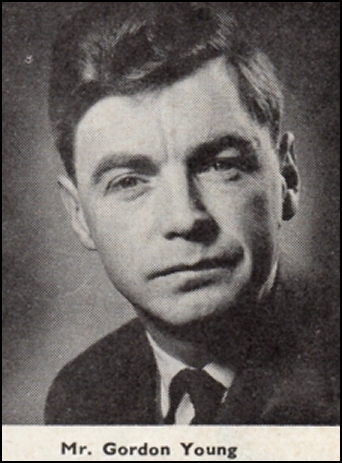 |
| |
| To be continued ....... |
| |
| The 'Laloun'
was later replaced by the 'Yarvic' |
| |
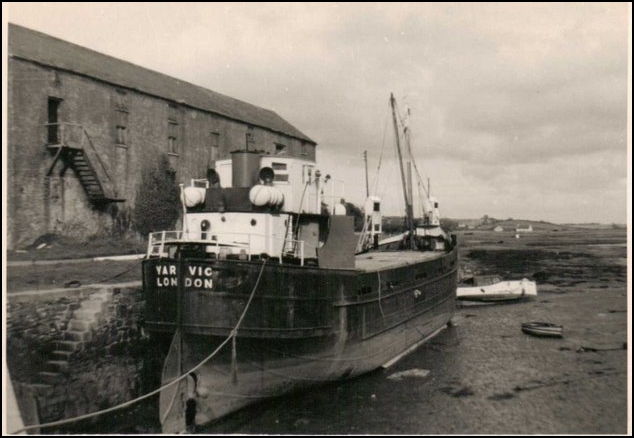 |
| The 'Yarvic' was built by Dunston's at
Thorne in 1944, and scrapped in France in 1967 |
| |
| As regards your ‘Yarvic’ story it is an
interesting photo as it shows her lying on the mud, obviously tidal so
cannot be on the Seine. I suspect the photo was taken down the Thames
estuary somewhere, up some creek around the Medway area. I would be
interested to hear more about the Book and whether the author took up
Alan Bott’s offer? |
| |
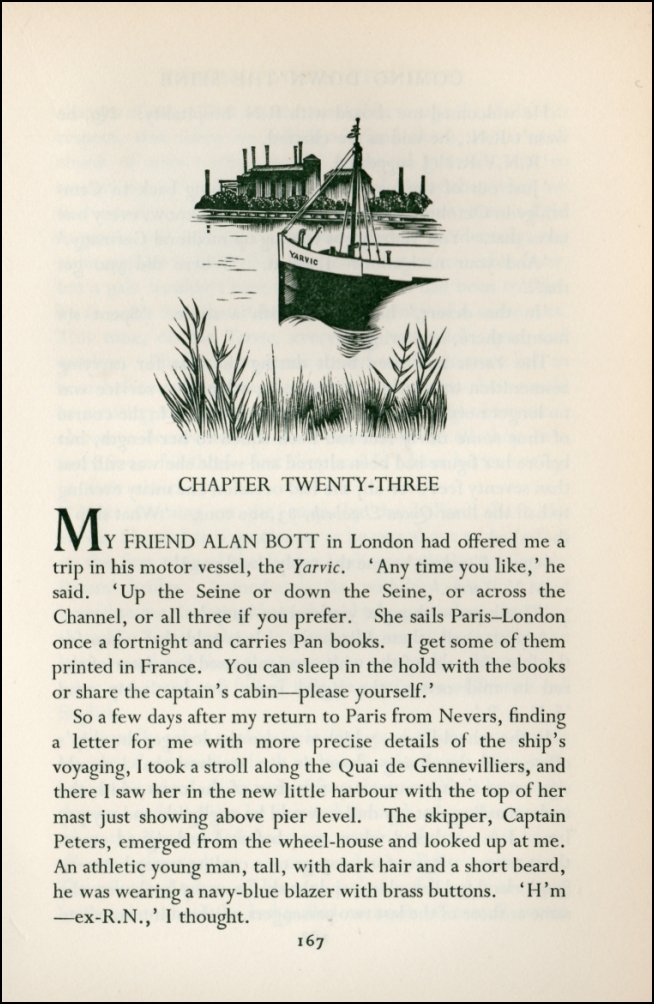 |
| From the
book “Coming Down The Seine’ by Robert Gibbings |
| |
| The ‘Yarvic’ was a wartime built replica of
the Clyde Puffers of pre-war days and the Admiralty built about 50 of
these to serve the fleet at its various anchorages. They were all given
numbers after the prefix VIC short for ‘Victualing Inshore Craft’. Most
were disposed of at the end of the war and some were purchased for
coastal cargo work which ‘Yarvic’ was, probably owned by the skipper.
She was chartered by Pan, as Laloun was not really a paying proposition
as she was expensive to run and I suppose there were contracts to
complete with the French printers. There was also an arrangement with
the Foreign Office to convey supplies to the British Embassy in Paris.
As I think I told you, 'Laloun' was sold in 1949 to a consortium and was
used to carry duty frees from North Africa to the South of
France/Northern Italy (in other words ‘smuggling’ ) and was eventually
caught. The story is told in Nicholas Montsarrat’s book ‘The Ship That
Died Of Shame’ Interestling, there are one or two VIC’s still surviving
– VIC32 is owner skippered running short holiday cruises off the West
Coast of Scotland and some years ago I had a cruise on her from
Inverness to Fort William through the Caledonian Canal. I know of one
other, now derelict lying at Inverary and used in the ‘Para Handy films,
her name was ‘Maggiie’ |
| |
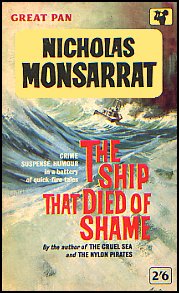 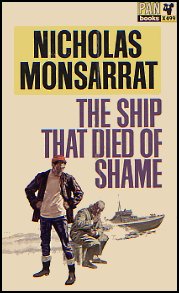 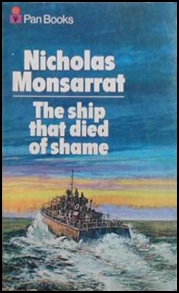
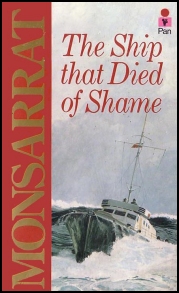
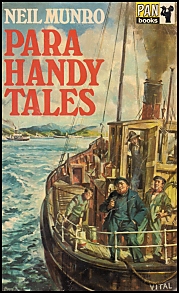 |



















.jpeg)
.jpeg)











